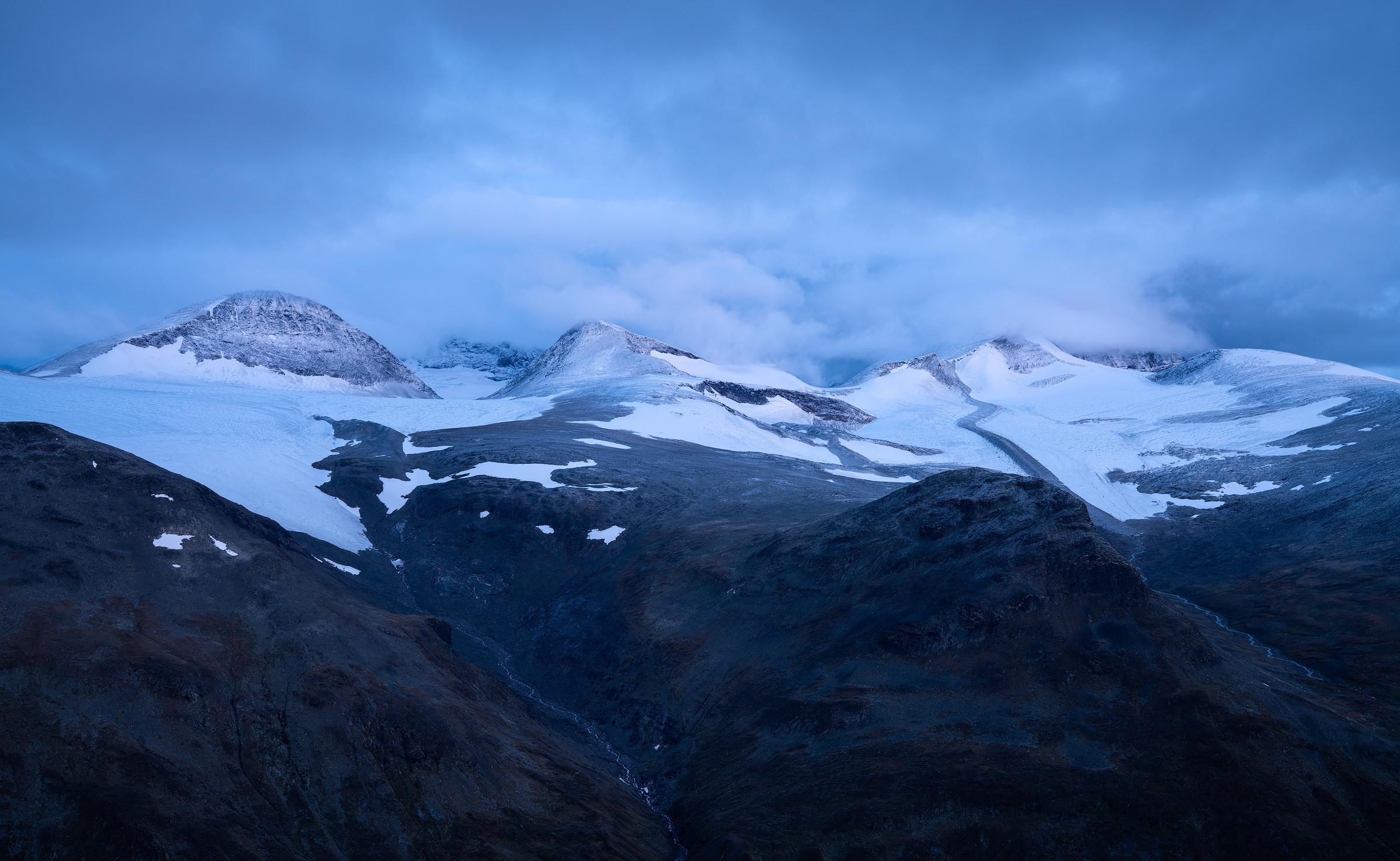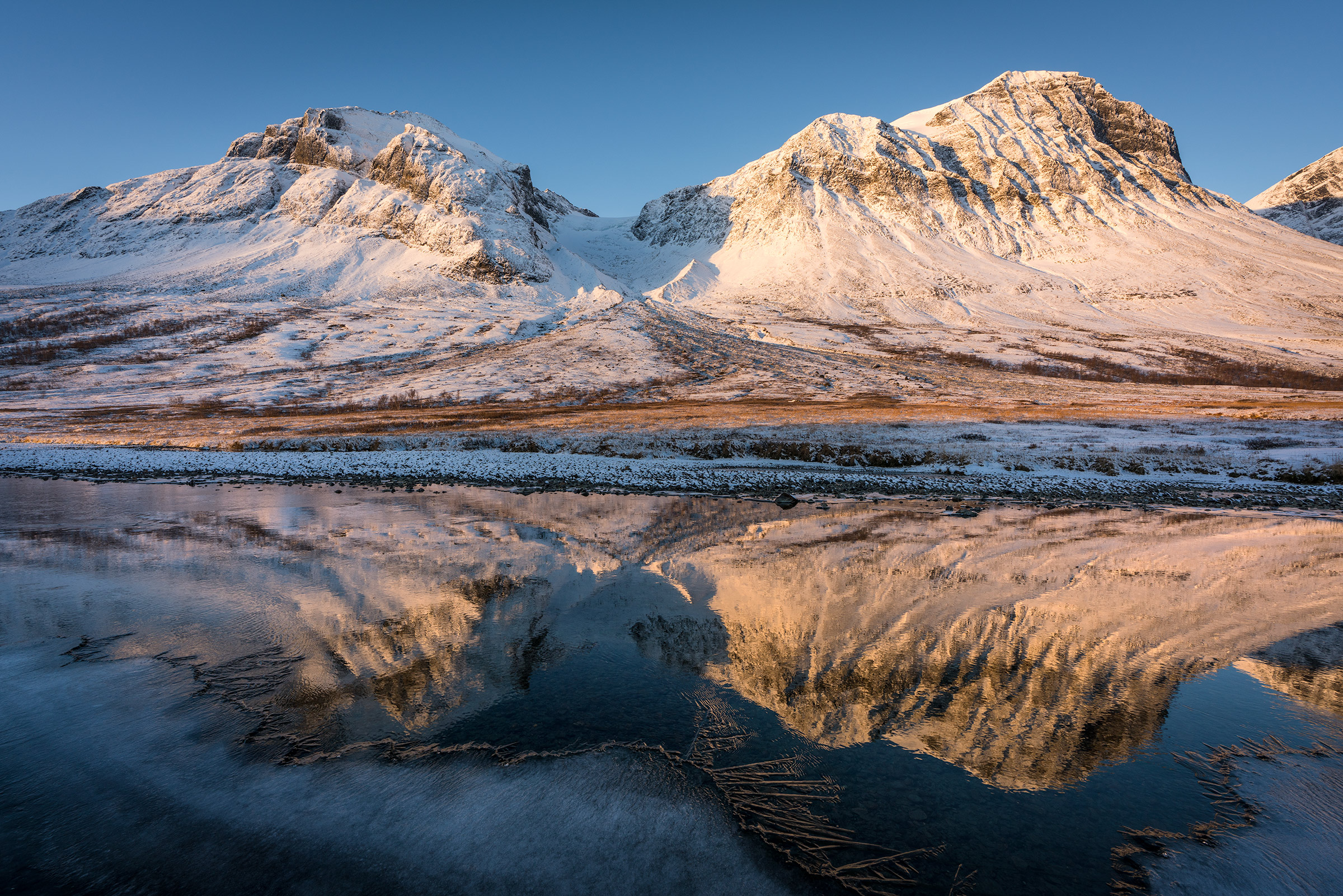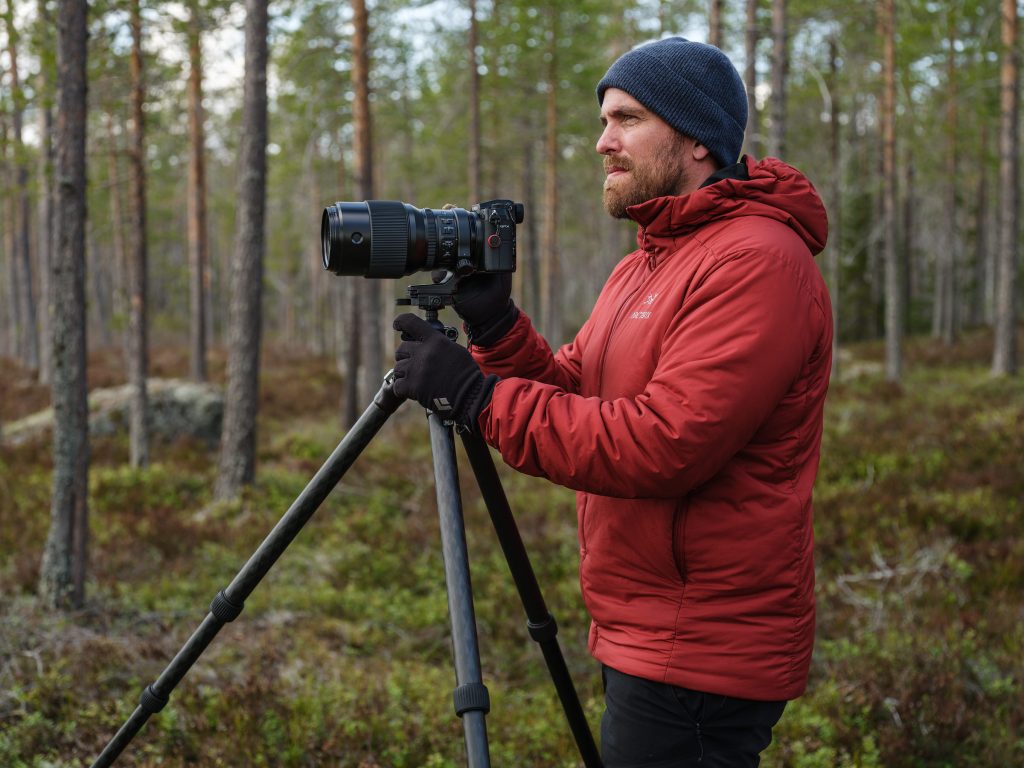
During the coming months I’m going to spend a lot of time in the mountains – mostly in Sarek National Park. I set out to photograph my favorite time of the year, from August to October, as summer is turning into winter.
Okay, I must admit, midwinter is also a favorite. Although the light can be quite magical during midwinter, there’s not much happening in nature. The landscape is hibernating. Between August and October however, nature is in constant change.
As a photographer I’ve really come to appreciate this change. Each month comes with its own photographic potential and challenges.
In this post I thought I’d bring you along as the seasons change from summer to winter in the mountains of Sarek and Kebnekaise.
August – The Short Summer
In the high mountains of Sarek summer is short. It both arrives and ends in August. Most of the snow from last winter has now melted in the high terrain and lush green vegetation covers the valley floor.

The days are still long and the sun rises high enough in the sky to reach down into the deep valleys. Light for photography can be good both day and night if conditions are right.

Buy Art Print
August is also one of the easiest months to travel in the mountains. However, one can of course have bad luck. Two weeks of constant rain can make life miserable and rivers impossible to cross.
September – First Snow & Autumn Colors
In September the autumn colors arrives and the high peaks usually get their first dusting of snow. It’s the month of color and contrast and a fantastic time to be out as a photographer.

The autumn colors of the birch trees varies from year to year. Some years they are more intense and others they loose their leaves leaves in an early autumn storm.
September also brings the first frost nights of the season (this is good for the autumn colors). It’s a special feeling waking up after a cold and crisp night in a tent covered in frost. On such mornings coffee tastes even better.

Buy Art Print
During autumn the character of the light is changing. The sun travels lower above the horizon and doesn’t reach into the deep valleys anymore. The north faces of the mountains won’t see the light again for half a year.
October – On The Edge of Winter
The days are rapidly getting shorter and the temperatures lower. The colors of autumn are gone and the landscape becomes quiet and stark – until the first snowfall.

Buy Art Print
In October it becomes more demanding to travel in the mountains. Being out for weeks in humid conditions with temperatures around freezing can even be more difficult than traveling in winter. The short days makes it hard to keep clothes and gear dry.
This time of year is also the most uncertain. If a severe snowfall hits it can be really tough to get around. I have learned this lesson the hard way – hiking through waist deep snow is exhausting both physically and mentally.
If one is willing to go that extra mile, October can offer some special experiences and unique conditions for photography.

Within three months the mountains of Sarek and Kebnekaise are transitioning from summer to winter. Lakes and rivers freeze and a thick layer of snow will soon cover the landscape. The bright nights of summer are replaced by the darkness of midwinter.
/ Magnus
Support my work
& Get Access to Exclusive Content
Support my work and get access to exclusive content including my new Wilderness Backpacking Gear Guide Video Series and much more.





